Health and safety
 Audio for slide 2 (mp3 |6|KB)
Audio for slide 2 (mp3 |6|KB)
We've discussed these topics in other units from the Flooring Technology series, in particular in Safety at work.
So in this lesson we'll concentrate on two problems that have special importance to floor covering take-ups - biological hazards and dust hazards.
After all, the process of removing old floor coverings is a form of demolition work, which means you may be exposed to hazardous substances that have been in the building for a long time.
Firstly, let's look at biological hazards and infection control. Then we'll turn to the different types of dust hazards you may be exposed to and the best ways to control them.

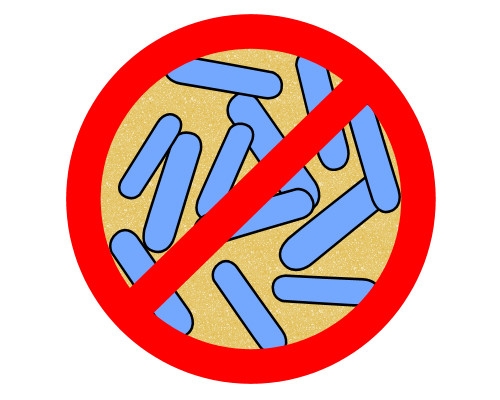 Audio for slide 3 (mp3 |6|KB)
Audio for slide 3 (mp3 |6|KB)
Biological hazards
All floor surfaces accumulate dirt, contaminants and organic matter over time.
Carpet is particularly prone to trapping particles, but even smooth surfaces can allow contaminants to build up in cracks, corners and underneath furniture.
Organic materials that become embedded in the floor covering may include spilt food and drinks, pet urine and faeces, and any materials that are walked in on the underside of people's shoes.
These contaminants will become a food source for insects and rodents, including cockroaches and mice, as well as a breeding ground for bacteria.
Some types of bacteria, such as salmonella, e-coli and leptospira, can cause serious illnesses.

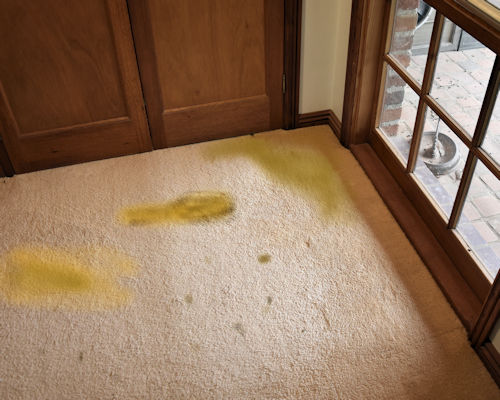 Audio for slide 4 (mp3 |6|KB)
Audio for slide 4 (mp3 |6|KB)
When you're pulling up an old floor covering, especially carpet that has obvious signs of animal wastes or stains, you need to be careful to avoid contracting an infection through inhalation or skin contact.
The easiest way to avoid breathing in airborne particles is to wear a suitable face mask and minimise the amount of dust that's allowed to float in the air.
We'll talk more about these steps in the subsections below.
To stop the entry of infections through your skin, you should wear good quality gloves while you're working and wash your hands well when you finish.
If you suffer any cuts, make sure you treat them straight away with antiseptic and cover them over with a bandage.

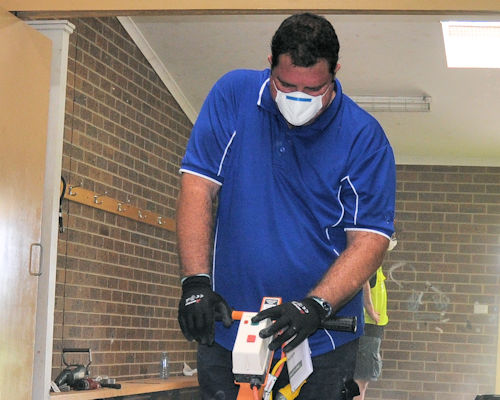 Audio for slide 5 (mp3 |6|KB)
Audio for slide 5 (mp3 |6|KB)
In instances where the carpet is badly soiled, or there is evidence of needles or syringes in the area, you should talk to the client about arranging for a commercial cleaner to come in before you start work.
Remember that needle-stick injuries can have serious repercussions, including the risk of contracting hepatitis or HIV.
Always carry out a risk assessment before you commence a take-up, and discuss any major hazards with the client.
This will help you to ensure that you've taken all necessary steps to control the risks and have costed in any extra expenses that may be involved.

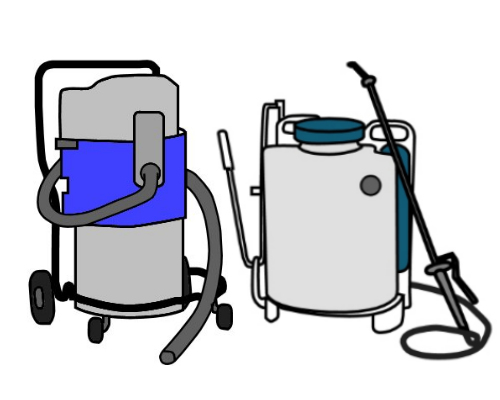 Audio for slide 6 (mp3 |6|KB)
Audio for slide 6 (mp3 |6|KB)
General dust hazards
Some types of dust are more toxic than others, so we'll discuss specific problem dusts in a moment under their own subheadings.
However, in general, you should take the following steps to minimise the amount of airborne dust that's produced when you pull up an old floor covering:
- open doors and windows, where possible, to allow the breeze to flow through
- turn on exhaust fans to help extract the dust
- vacuum the old floor covering before you pull it up, using a vacuum cleaner fitted with a HEPA (high efficiency particulate air) filtration system
- vacuum the subfloor after removing the floor covering and underlay
- if sweeping is necessary, spray a water mist on the surface first; or sprinke sawdust on the surface and then spray it with water
- wear a dust mask if the job you're doing is producing airborne dust.

 Audio for slide 7 (mp3 |6|KB)
Audio for slide 7 (mp3 |6|KB)
Allergenic dust
Some people are prone to developing allergic reactions when they're exposed to certain types of dust.
These reactions can include hayfever symptoms, headaches, or in serious cases, asthma attacks.
If there are occupants in the building who you think might be susceptible to an allergic reaction, you should warn them in advance so they can leave the area.

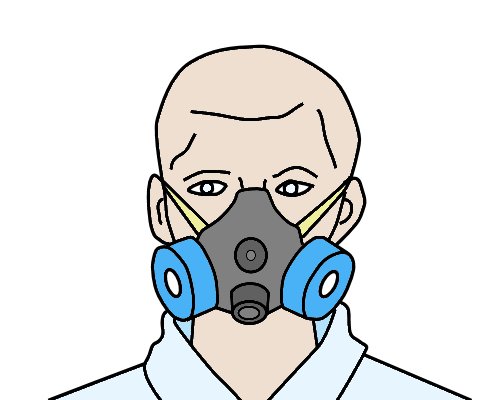 Audio for slide 8 (mp3 |6|KB)
Audio for slide 8 (mp3 |6|KB)
If you have these sorts of allergies yourself, make sure you take all proper precautions.
This might include wearing a better quality respirator with cartridge filters and having an asthma puffer (or inhaler) on hand.
Again, you should also use a vacuum cleaner fitted with a HEPA filtration system before you pull up the coverings.

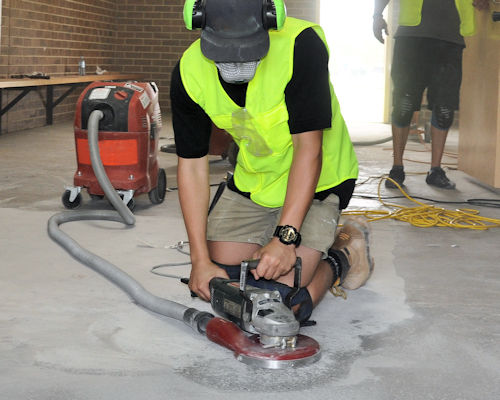 Audio for slide 9 (mp3 |6|KB)
Audio for slide 9 (mp3 |6|KB)
Silica dust
If the subfloor is concrete and you need to grind it to remove adhesive residue, you will be exposed to silica dust.
Concrete and cement contain silica particles, and if you breathe the dust in over a period of time it can cause 'silicosis' or scarring of the lungs.
Make sure you use a grinding machine that has a good quality dust extraction system.
This may include an attachment that enables it to be connected to an external blower or industrial vacuum cleaner.
It may also have a hose attachment that allows water to be sprayed directly onto the concrete while it's being worked.
If you don't have a mist sprayer, you can sprinkle wet sand on the floor before you start grinding.

 Audio for slide 10 (mp3 |6|KB)
Audio for slide 10 (mp3 |6|KB)
Wood dust
Wood based subfloors often need to be sanded or planed to remove old adhesive residues or high spots.
If the subfloor is solid timber, the dust can trigger allergic reactions in some people, and over time may cause nasal or lung cancer.
If the subfloor is made from a structural sheet product, such as particleboard or plywood, the dust you generate will contain formaldehyde glues in addition to the reconstituted wood fibres.
All floor sanders should have dust extraction systems fitted.
These may either include a bag that's attached to the sander or a fitting that allows an external collection system to be attached.

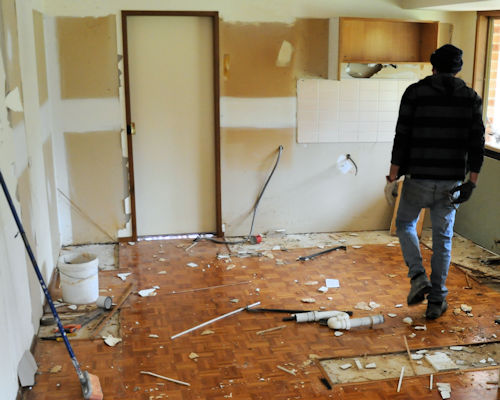 Audio for slide 11 (mp3 |6|KB)
Audio for slide 11 (mp3 |6|KB)
Asbestos dust
The most serious concern when you're working in buildings that were built before the 1990s is the possibility of coming across materials that contain asbestos.
A dust mask alone is not sufficient protection if you disturb any wall sheeting, floor coverings or other building materials that contain asbestos.
Bonded (also called 'non-friable') asbestos products, such as fibro sheeting, are generally safe as long as the material remains undamaged and is left undisturbed, because the fibres are held together with cement or other binding agents.
However, if the fibres are released and float into the air, they can cause serious health problems, including lung cancer, if they're inhaled.
Some building products contain friable asbestos fibres even in their undamaged state, such as loose-fill asbestos insulation.
These products are dangerous if disturbed in any way, and should not be touched.

 Audio for slide 12 (mp3 |6|KB)
Audio for slide 12 (mp3 |6|KB)
There are strict laws in place that control the removal and disposal of asbestos-based building products.
These include the requirement that certain amounts and types of asbestos must only be removed by a licensed contractor.
In these cases, you will need to get an 'asbestos clearance certificate' as part of your job sheet documentation before you start work.
We'll talk more about these issues in this next section of this unit.


Learning activity
Audio 13 (mp3 |6|KB)There are many websites that contain information about asbestos-based products. One example is Asbestos Awareness, which is managed by the Asbestos Education Committee
Below are some sample photos taken from the Asbestos Awareness website, showing various asbestos-based products you may come across from time to time as a flooring installer.
For each product shown, write down in your workbook what type of product it is (such as vinyl tile, sheet vinyl, cutback adhesive, carpet underlay, etc).
Then indicate one or two features about that product (or its surroundings) that would help you in the field to identify that you might be looking at an asbestos-based product.

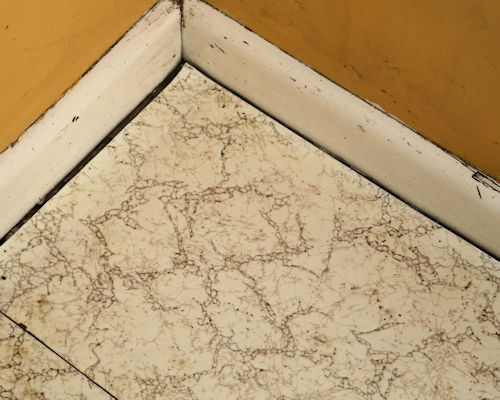
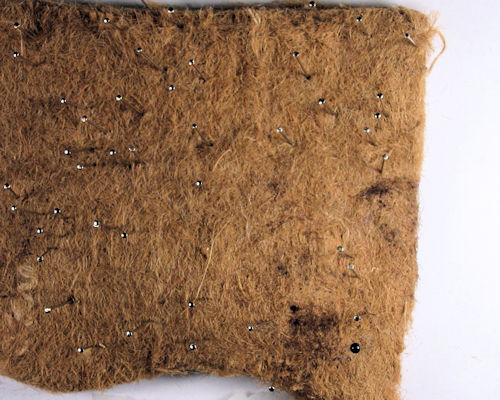

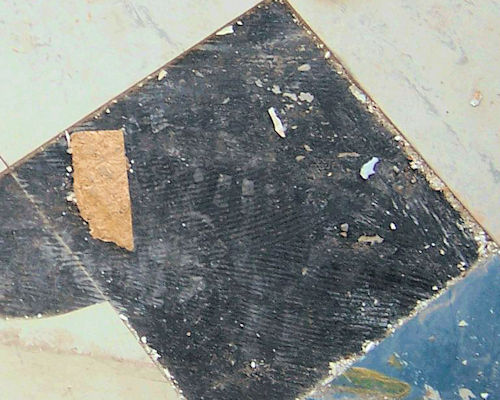

 Go to Removal techniques
Go to Removal techniques




